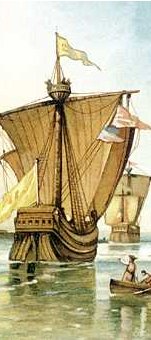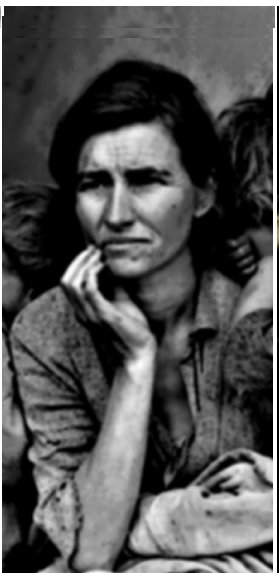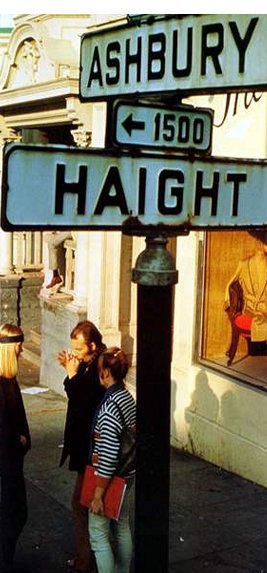Golden
State in Danger Julie Oh
Kevin Starr is California's
foremost historian. His acclaimed multi-volume Americans
and the California Dream is an unparalleled work of cultural history up
through 1950, Endangered Dreams: The Great
Depression in California
being the fourth volume. Starr is State Librarian of California, contributing
editor of the Los Angeles Times, a
member of the faculty at the University
of Southern California, and the
Chairman of the California
Sesquicentennial Commission.
The 1930s in the United
States was characterized by a dramatic,
world-wide economic downturn- the Great Depression. This decade of high
unemployment, poverty, and political and social turmoil affected the nation
like no other time. Even in the Golden
State, the 1930s was a perilous and
prodigal time. Kevin Starr¡¦s Endangered Dreams: The Great Depression in
California captures the epic story of this struggle and recovery of California
during the 1930s.
Beginning
the book by describing the radical traditions present in California
before the Great Depression, Starr establishes the presence of a distinctive Marxist
Left, or the radicals, and an equally assertive fascist Right, or the
conservatives, in the late nineteenth and early twentieth century. Starr starts
the first chapter by declaring that ¡§radicalism-as a program, a style, a mode
of fiery rhetoric and symbolic gesture-had deep, very deep, roots on the West
Coast.¡¨1 He describes the rise of organized labor in San
Francisco by depicting the Gold Rush and its effects
on diversity and distribution of wealth in California.
During this time, workers had the right to organize and express their needs
through general strikes. However, conservative elements soon lashed back as
Starr illustrates in chapter two. Passing the Criminal Syndicalism Act of 1919,
the California oligarchy broke up
active radical organizations. Starr gives detailed and vivid images of the battle
between the Industrial Workers of the World (IWW) and the law. He also gives
many other examples, such as the Market Street bombing and the Sacco and
Vanzetti Trial, to show that the 1910s and early 1920s witnessed the surfacing
of extreme political spectrums in California.
By
the 1930s, with the stress of the Great Depression exacerbating the conflicts, California
faced an even more intense political conflict. Starr states, in his third
chapter, that California in the
1930s ¡§functioned as a testing ground for the viability of both the fascist and
the Communist options.¡¨2 In the first half of the decade, the revolutionary
impulse dominated the nation. Ethnic diversity, discrimination, and large
numbers of migrant farmers fleeing the Dust Bowl created cultural rivalries.
These migrants challenged the oligarchy, leading to strikes in the fields and
canneries. Starr focuses on the rise and fall of the Cannery and Agricultural
Workers Industrial Union (CAWIU). In 1933, the CAWIU led most of the cannery
strikes and was at the left extreme of the political scale in that the
Communist Party sent their most talented and committed organizers directly into
their fields. Starr points out that the CAWIU introduced the idea that the
lowest workers and farmers could still do something about their situation.
Moreover, in his fifth chapter, Starr highlights socialist Upton Sinclair¡¦s
campaign for Governor of California to show the Left on the brink of its
triumph with his promise to End Poverty in California (EPIC). Although Sinclair
lost, he showed great signs of winning and thus convinced a large minority that
utopian socialism was a viable option for Californians. Then, Starr talks about
the second half of the decade, when a resurgent Right dominated the nation in
search of a fascist alternative. The turning point came in 1934 when both
workers and soldiers occupied the streets for fist fights, gunfire, and blood
during the San Francisco water
front and general strikes. Starr takes a close look at the personalities and
events that led to violence during this time. Using anti-communist propaganda
for public support, and creating the Associated Farmers of California, which
provided food for soldiers and strike-breakers, conservatives gained power. The
California Right employed techniques such as manipulation of the criminal
justice system, spies, political trials, convictions, imprisonment, and
executions to successfully dissolve the CAWIU. Starr gives the Sacramento
trial as an example. In the end, however, he argues that California
was in no real danger of a fascist takeover during these years, saying that the
state was only testing the conservative alternative just as Upton Sinclair and the
EPIC campaign had explored the California¡¦s
liberal possibilities.
In
the third part of the book, the author illustrates the effort at recovery from
the Great Depression. Starr begins this section by explaining how the New Deal
almost came to California. A
newly emergent Democratic California helped elect Franklin D. Roosevelt, and its
members expected his New Deal to help the state to recover. However, for the
rest of the decade, the conservative resistance to the New Deal and the Democrats
prevented the election of a Democratic governor in California
until 1939, when it was too late. In 1938, Governor-elect Democratic Culbert
Olson, after meeting with President Roosevelt, had promised to bring the New
Deal to the Golden State.
However, the reforms that Olson achieved were mainly in prisons and health
care, constituting more of the Progressive agenda than New Deal legislature. Also,
the Pension Plan Association, or Ham and Eggs, had become a statewide
phenomenon in 1937, outshining the New Deal. In addition, Starr profiles the
individual who had enough political power to prevent the New Deal from reaching
California: Artie Samish. According
to Starr, while California
accepted ¡§the national will and largesse in this regard¡K [they] remained
resistant to the spirit and intelligence behind the New Deal.¡¨3 Then,
the author illustrates other Californian efforts to recover from the Great
Depression, including soup kitchens, migrant camps, and relief efforts. With
the Dust Bowl, the sudden arrival of more than three hundred thousand migrants
within a few years led to a disaster in housing and healthcare in California.
At this time, helpers of the migrants, mainly progressive New Dealers such as
Simon Julius Lubin, Paul Taylor, and Thomas Collins, established a medical plan,
pension program, credit union, migrant camps, and daycare centers to aid those
in poverty. In this section, Starr also includes the development of documentary
art during the Depression. Specifically analyzing John Steinbeck¡¦s Grapes of
Wrath, and Dorothea Lange¡¦s Migrant Mother, Starr believes that the
Depression greatly raised the level of imaginative expression.
The
last section of the book shows the complete recovery of California
through public works. The federal government first initiated these works to
counter unemployment. Soon, without significant federal involvement, Californians
applied this therapy not only to recover from the Great Depression, but also to
enhance their environment and conditions of life. For example, parkways,
tunnels, and bridges solved the question of automobile traffic. Starr states
that ¡§these public works, in turn¡K met practical needs of long standing.¡¨4
He then explains how each of the great projects was accomplished and how it affected
the state. Starr especially focuses on the San Francisco-Oakland Bay Bridge,
the largest bridge in the world, and the Golden Gate
Bridge, the most beautiful and the
most intelligent. Meanwhile, Starr also proposed that public works projects on
a lesser scale, such as schools, libraries, post offices, hospitals, airports,
armories, recreational parks, and other facilities, improved the quality of
life and enlarged shared public identities. By 1940, California
had unified through public works and completed its recovery.
Kevin
Starr¡¦s Endangered Dreams: The Great Depression in California centers on
the social, cultural, and political struggles in California
during the Great Depression. Starr states, ¡§The inner landscape of California¡K
especially in its political dimension, showed constant signs of stress as the Right
battled in a struggle that acted out on behalf of the rest of the nation a scenario
of possible fascism and communism in the United
States.¡¨5 He argues that California,
during these hard times, was a battlefield between the extreme Leftists and Rightists.
Starr proves his point by telling the stories of California¡¦s
industrial labor movement, communist-led agricultural strikes in the Imperial
Valley, Sinclair¡¦s uproarious EPIC movements, fascist state and
local law enforcement, the press and the judiciary, and the great public works
projects of the era. Throughout the book, Starr illustrates how one side would
rise to power and how the other side would soon fight back, establishing an
equilibrium. He shows how California
was almost communist or fascist when one side suppressed the other at certain
times. However, the author also points out that actually having communism or fascism
in California was unrealistic
because both sides were equally powerful. In the end, through public works
projects, California developed a
sense of unity and recovered from the Depression.
Kevin Starr¡¦s six-book series of California¡¦s
dream shows his in-depth knowledge about his state. In all his books, Starr
always depicts California as a
place where the hopes and fears of the American dream have played out in a
bigger and bolder way. In Endangered Dreams: The Great Depression in
California, he shows the extremes of politics during the Depression era
that separated California from
the rest of the nation. Starr¡¦s work includes both progressive and consensus
historiography. As progressive historians, Starr stresses the conflict between
competing groups. His book embraces clash between labor and big business,
democracy and oligarchy, and liberalism and conservatism. Although Starr
believes in progress, he is not fully a progressive historian because he does
not conclude that the solution to every problem is democracy, but rather the
compromise between radical and conservative. Starr does not show bias in the
book. After making an argument, he draws upon large amounts of evidence to
prove his point. However, with his broad views, Starr always presents the
opposing side of his argument as well. In showing out the battle between the
Left and Right, Starr does not lean toward either one side but instead acknowledges
their equal power. Starr is partly consensus historian because he believes that
Californians¡¦ disputes had never approached the intensity of Europeans¡¦. While
talking about how California was
testing the extremes of the political scale, Starr also states that ¡§in
comparison to Europe, fascism in California
remained embryonic.¡¨6 He believes Californians possessed narrower
range of extremes compared with other peoples of the world. However, he is not
fully a consensus historian because unlike them, Starr does believe that some
role of individuals, such as Upton Sinclair and his EPIC campaign, have shaped
the history.
Starr¡¦s
book received widespread praise. It was one of the Los Angeles Times¡¦s
ten best books of 1996 and also a San Francisco Review of Books¡¦s Critic¡¦s
Choice for 1995-1996. William H. Chafe of the New York Times praised Starr¡¦s work for ¡§depicting in
colorful prose and vivid details the political conflicts and physical
transformations that engulfed California
during the Great Depression.¡¨7 He also commended Starr¡¦s powerful
personal portraits, which made the book ¡§a giant movie screen on which the
dramas of the rest of the nation were acted out as public spectacle.¡¨8
On the other hand, Chafe stated that the very drama of Starr¡¦s presentation
created problems as well. Starr¡¦s contending forces are written so large that
Chafe feels ¡§as if every significant figure carried the burden of representing
Good against Evil.¡¨9 Also, Chafe criticized Starr for
oversimplifying history and not defining ¡§oligarchy¡¨ fully. Nonetheless, he
applauded Starr for his ¡§brilliant job exploring other sides of California
experiences,¡¨ such as the lives of migrant workers. 10 T.H. Watkins
from the Los Angeles Times described
the book as ¡§the defining portrait of a state in which the bravery, cowardice,
nobility and greed of hard times mixed in a brew of unmatched power.¡¨11
Watkins praised Starr for ¡§seizing the threads of history with such
whole-souled fervor.¡¨12
Starr
is especially proficient at telling history through detail and vivid description
of an individual or event. In particular, he describes Upton Sinclair¡¦s EPIC campaign
and the San Francisco strikes of
1934 so well that they form a picture in readers¡¦ minds. This style of writing
is what holds their interest. However, Starr often assumes the readers know
facts that can be unfamiliar to those not living in the state. For example, in describing
California¡¦s water supply and
water management system, Starr does not fully illustrate the system or the
place, thus challenging some readers¡¦ ability to follow along. Although Starr
throws out lots of information and stories, he does this in a way that seems
simple and organized. Dividing the book into four sections- radical traditions,
a decade of conflict, efforts at recovery, and the therapy of public works-
further orders his long story. However, one of the flaws of the book is that the
transition of California from
being a political battlefield to a state that is united by the end of the
decade is not shown well. Starr argues that ¡§by 1940 California¡K
[California] had reached a
long-lasting plateau of completion.¡¨13 While Starr illustrates how
public works projects were achieved, he does not really explain how these
projects helped the radical and diverse Californians unify. Overall, Starr has
written an interesting book with useful information that allows readers to see
the big picture of California in
detail.
According
to the author, although the Great Depression was a nation wide incident, California
was impacted in different ways than the eastern United
States. Initially, with agriculture at the
base of their economy, Californians did not suffer form the same levels of
visible turmoil and dislocation that hit more industrialized Eastern states.
Soon, however, ¡§what California
lacked in industrial suffering and strife was more than compensated for in the agricultural
and cannery strikes punctuating the decade.¡¨14 More time was needed
for the Great Depression to fully impact California,
but when that time came, the effect was even more serious. On top of that, large
numbers of farmers fleeing from Dust Bowl migrated to California,
increasing the rate of unemployment even more so than in the eastern states.
Also, while the eastern United States
followed the lead of President Roosevelt¡¦s New Deal in recovering from the
Great Depression, Californians rejected the program. As such, California
developed individualist and distinctive political and social traditions.
California¡¦s
distinction from the rest of the country is also evident in the conflict
between the extreme ends of the political spectrum. Starr argues that ¡§faced
with a ruinous depression, Californians of the 1930s managed, amidst some
social misbehavior, to accomplish one of the most creative decades in the
history of any American State.¡¨15
While many other nations had fallen into Communism or fascism during these hard
times, the United States,
managed to overcome the exploration of both sides and stick to the American
tradition of constitutional law and fair play. In this sense, the author argues
that California was important to
the rest of the country in exploring and overcoming these conflicts to prevent the
rest of the nation from falling to communism or fascism.
The
Golden State
faced just as many conflicts during the Great Depression as the rest of the United
States.
California explored the
extremes of politics, and the consequent political battle made this decade the
most radical and dramatic years in the history of the state. Towards the end of
the decade, California found
unity in public works projects and successfully recovered from the Depression.
Kevin Starr¡¦s Endangered Dreams: The Great Depression in California details
the story of the labor movement, communist strikes, fascist government, and
public works thoroughly with detailed and vivid description of many individuals
and event. This book presents the most unstable decade, the 1930s, in California,
from the first rise of the conflict to its resolution. Through this difficult
decade, Californians created their own brand of lifestyle that still continues
to intrigue the rest of the nation because of its resourcefulness and
diversity. As Starr says, ¡§They endured, and so did the California Dream.¡¨16
1. Starr, Kevin. Endangered Dreams: The Great Depression
in California. New
York: Oxford
University Press, 1996 3.
2. Starr, Kevin 82.
3. Starr, Kevin 222.
4. Starr, Kevin 275.
5. Starr, Kevin vii.
6. Starr, Kevin 194.
7. Chafe, William H. ¡§On the Edge: Depression-era
California as the scene of a grand moral
battle.¡¨ New York Times Book Review. 18 Feb. 1996: 19.
8. Chafe, William H. 19.
9. Chafe, William H. 19.
10. Chafe, William H. 19.
11. Watkins, T.H. ¡§The Decade the Dream Took a Beating.¡¨ Los
Angeles Times Book Review. 21 Jan. 1996: 10.
12. Watkins, T.H. 10.
13. Starr, Kevin 339.
14. Starr, Kevin vii.
15. Starr, Kevin viii.
16. Starr, Kevin viii.





















